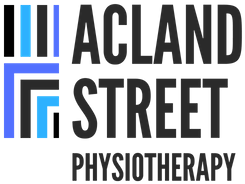|
Low back pain is a common condition affecting millions globally, significantly impacting daily activities and quality of life. However, with the right strategies, it's possible to prevent or minimise its occurrence. Acland Street Physiotherapy is dedicated to providing you with evidence-based information to guide you in preventing low back pain effectively. Understanding Prevention Levels Prevention of low back pain can be categorised into three main types: primary, secondary, and tertiary. 1. Primary prevention aims at stopping the disease before it occurs, focusing on health promotion and environmental regulation. 2. Secondary prevention targets the prevention of recurrences or exacerbations of already diagnosed conditions. 3. Lastly, tertiary prevention focuses on minimising morbidity through supportive and rehabilitative services after a disease or injury has occurred. Key Strategies for Low Back Pain Prevention
1. Core Strengthening Exercises Strengthening your core is vital for supporting your spine. Try exercises like planks and the bird dog to build core strength and stability. 2. Flexibility and Stretching Incorporate the cat-cow stretch and hamstring stretches into your routine to improve flexibility and reduce tension in the lower back. 3. Aerobic Exercise Engage in walking, swimming, or cycling to improve cardiovascular health and support back health. ** Please see YouTube clips below this blog post for demonstrations of these exercises recommended above! What to Avoid Certain interventions like lumbar supports, back belts, and shoe insoles are not recommended for preventing low back pain due to their potential negative effects on back pain beliefs. Personalised Approach to Prevention A one-size-fits-all approach does not apply to preventing low back pain. Consulting with a physiotherapist at Acland Street Physiotherapy can help create a personalised prevention plan that suits your specific needs. Preventing low back pain requires a multifaceted approach, combining physical activity, manual therapy techniques, ergonomic adjustments, and educational programs. By adopting these strategies, individuals can significantly reduce their risk of experiencing low back pain and improve their overall health and well-being. Remember, an ounce of prevention is worth a pound of cure. Stay active, stay informed, and let's work together towards a pain-free back.
0 Comments
Over the past 15 years practicing as a local physiotherapist, I have discovered through clinical experience 5 critical key factors which determine the success or failure of your physiotherapy treatment program. I would like to share them to all my prospective and existing patients as being aware of these can help increase the likelihood of the success of your physiotherapy treatment program at Acland Street Physiotherapy, at the very least!
The 5 critical key factors which determine the success or failure of your physiotherapy treatment program are: 1. Ensure you do as much research as you can about the physiotherapist you are considering to book in with. Unlike a GP, you will likely spend a lot more time with your physiotherapist so it is important that you will likely get along. Questions to consider include:
3. Work in collaboration with your physiotherapist to discuss your health goals, treatment options and timeframes. The physiotherapist should explain what treatment options will likely resolve the condition for you, and it is completely up to you on whether you feel comfortable about pursuing one or more options. There needs to be a clear plan in place to make treatment work for you. 4. Be prepared to do work. There is only so much benefit "hands on" passive treatment the physiotherapist can provide you as part of your recovery journey. It is arguably more critical that you actually complete the home exercise program the physiotherapist recommends for you to do. The physiotherapist should be designing a program that is realistic to you, and very well integrated into your lifestyle. 5. You should feel comfortable and not hesitate to communicate with the physiotherapist about your treatment program and any concerns outside the walls of the consult room. At Acland Street Physiotherapy, we encourage our patients to email the physiotherapist in between consultations, and on occasion, the conversation may be escalated to a phone call or an appointment if deemed necessary. |
Author
Archives
May 2024
|
Copyright Acland Street Physiotherapy © 2024

 RSS Feed
RSS Feed